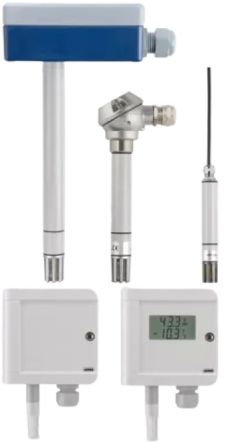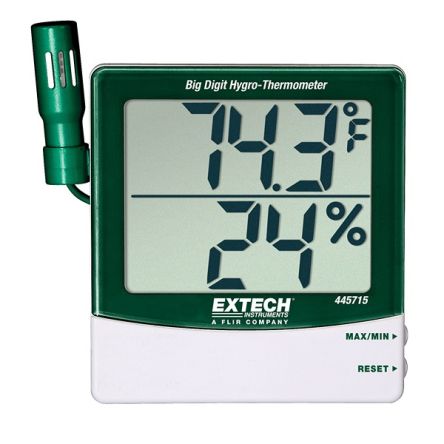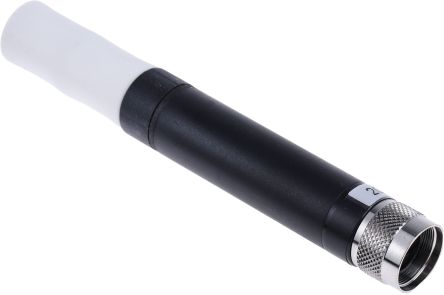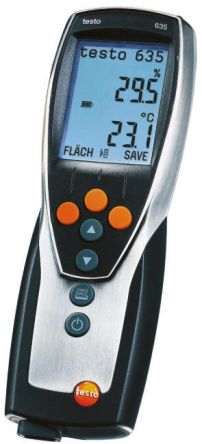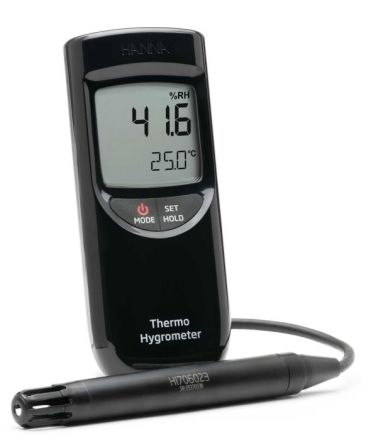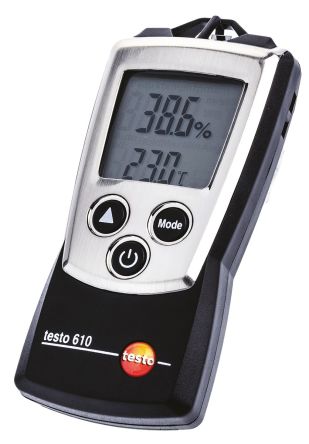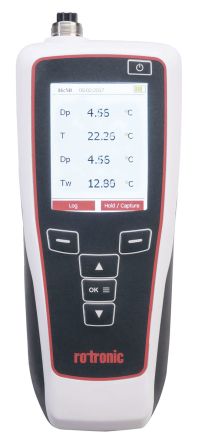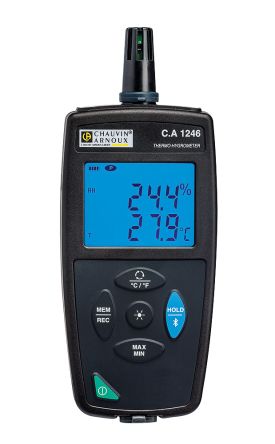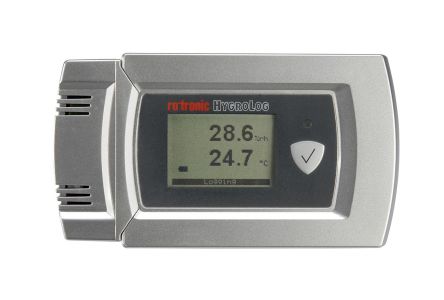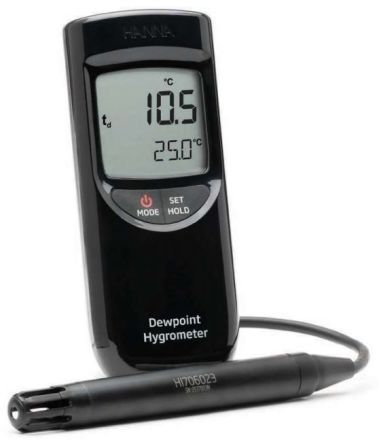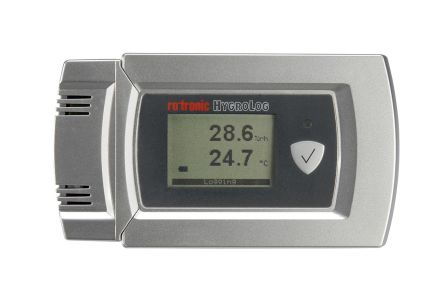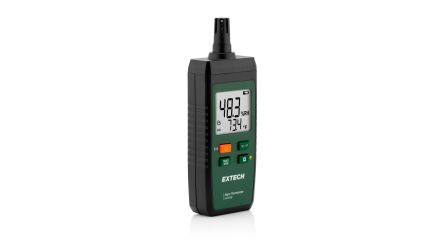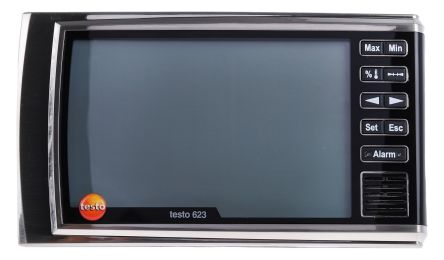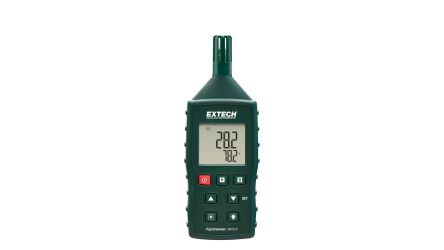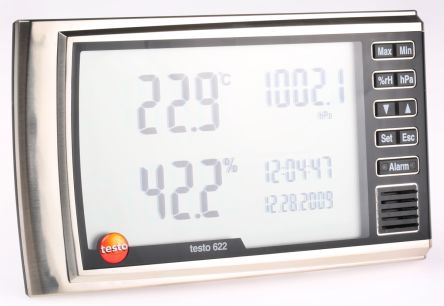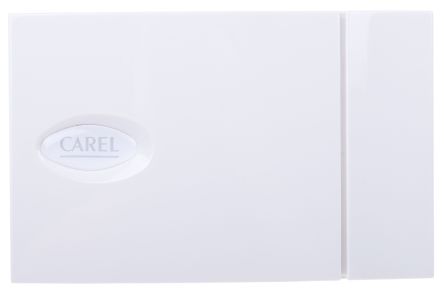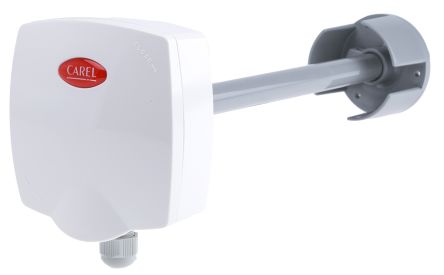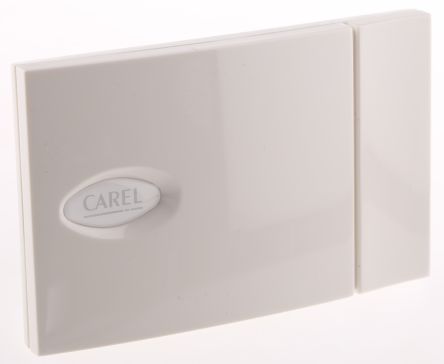- Automation & Control Gear
- Cables & Wires
- Enclosures & Server Racks
- Fuses & Circuit Breakers
- HVAC, Fans & Thermal Management
- Lighting
- Relays & Signal Conditioning
- Switches
- Batteries & Chargers
- Connectors
- Displays & Optoelectronics
- ESD Control, Cleanroom & PCB Prototyping
- Passive Components
- Power Supplies & Transformers
- Raspberry Pi, Arduino, ROCK, STEM Education & Development Tools
- Semiconductors
Hygrometers
A hygrometer measures the humidity and water vapour in the air. A hygrometer measures both humidity and temperature, and it does this by calculating of both air pressure and temperature changes, which results in the moisture's percentage in the air. Used in environments that require constant monitoring of humidity, this could be in food processing where it's imperative that humidity stay at a constant as it could affect production.
Within a volume of air, the maximum amount of water vapour it can hold varies by temperature with cold air holding a fraction of what warmer air will. Most moisture meters use temperature to give the relative humidity (RH) for a particular temperature and display it as a percentage. Most models have a built-in digital LCD display but there are several which use an analogue readout, these are primarily for continuous monitoring. These instruments all feature built-in displays and some offer features such as datalogging, web bulb temperature or dewpoint.
Types of Hygrometers?
Depending on your requirements, the hygrometer needed is important, some types of hygrometers include:
- Thermo-hygrometers are used to test HVAC systems and office environments. They often feature a probe which can be inserted through an air-conditioning duct to get readings from within the ducting.
- Digital hygrometers offer a modern approach to for easy-to-read measurements and sometimes feature an in built data logger for recording measurements for analysis. Digital thermohygometers feature a digital display, such as the Testo 608-H1 uses an LED display to monitor temperature changes and a capacitive humidity sensor to provide dew-point calculations through the use of a probe. However digital thermohygrometers are available as resistive and capacitive, both have different methods to achieve accurate results.
What's the difference between a Hygrometer and a moisture meter?
A hygrometer measures the moister in the air and a moisture meter measures the moisture within a material such as wood, paper or stud walls.
Why choose RS for a Hygrometer?
RS not only has a vast range of hygrometers from leading brands such as Testo, Rotronic Instruments, Fluke and our very own brand RS PRO, but an in house calibration service. This calibration service is to RSCAL and UKAS standards and ensures accurate and reliable measurements.
Popular Searches
Related links
- Rotronic Instruments HL-20D-SET Digital Hygrometer +60°C Max, 100%RH Max
- RS PRO RS-325A Digital Hygrometer 99%RH Max
- FLIR SDL500 Digital Hygrometer +1300°C Max, 95%RH Max
- Rotronic Instruments HL-20D Digital Hygrometer Max Humidity 100%RH
- Electrotherm Hygrometer
- RS PRO Handheld Hygrometer +50°C Max, 99%RH Max
- RS PRO Analogue Hygrometer +60°C Max, 80%RH Max
- Testo 610 Handheld Hygrometer +50°C Max, 100%RH Max

